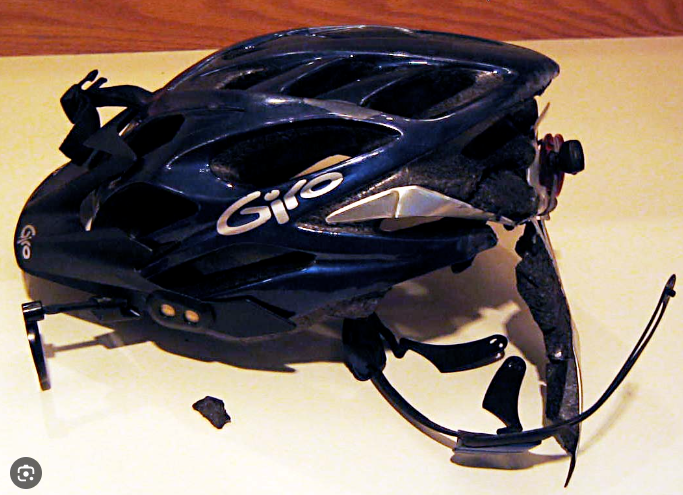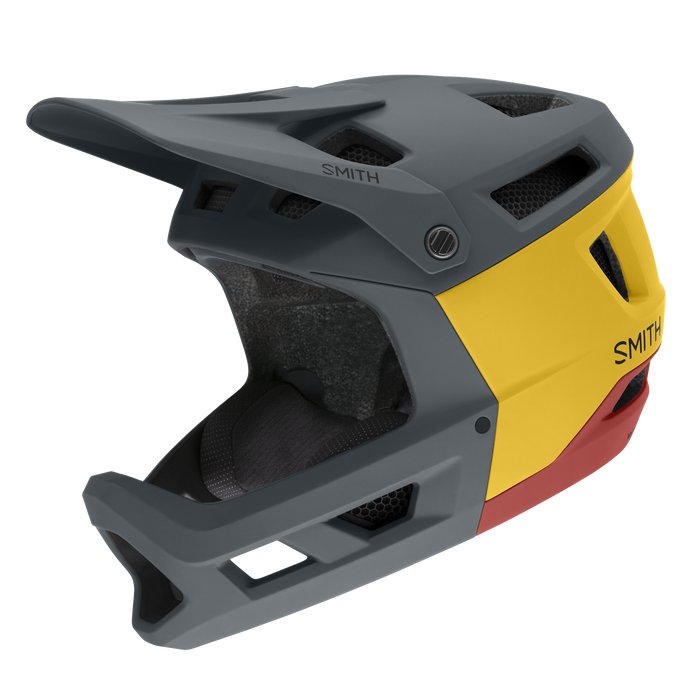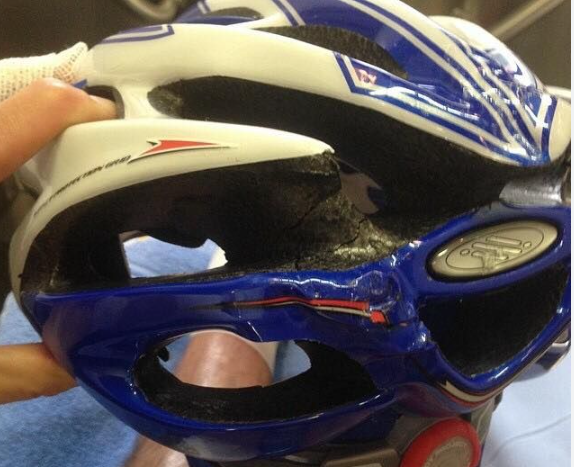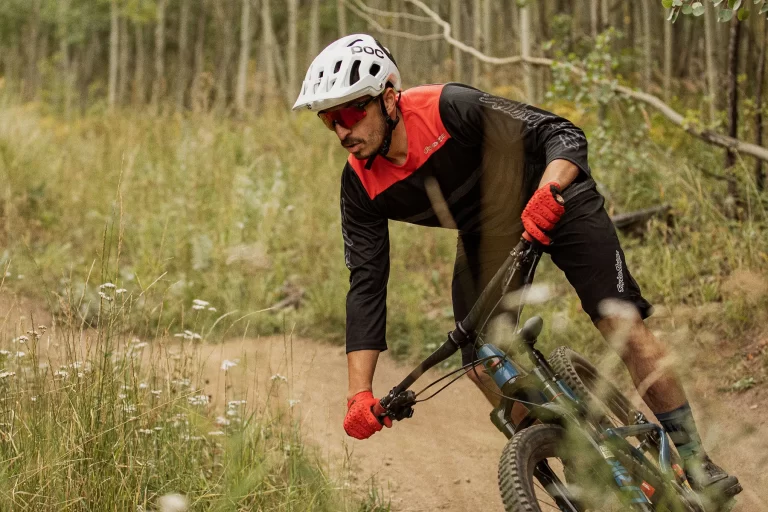Should you Replace Your Bicycle Helmet After a Crash?

Should You Replace Your Bicycle Helmet After a Crash?
So, here’s the deal. I’ve spent more than three decades with my butt glued to a bike saddle. And yeah, I’ve seen it all—epic sunrises, those awesome downhill speeds where you feel invincible, and of course, those not-so-great “ouch” moments (yeah, the crashes). The good news? My noggin has always been protected, thanks to my helmet. Over post-ride drinks, one hot topic among my buddies is: after taking a tumble, is it time for a new helmet?
What’s Up With Helmets Anyway?
At first glance, helmets might look like simple plastic hats. But man, there’s a lot of science in these things! When you fall and hit your head, your helmet is like that friend who takes one for the team—it absorbs the nasty stuff so you don’t have to. But here’s the kicker, helmets are sort of “one-hit wonders.” Once they take a big blow, they might not be up for round two.
Damage: It’s Not Just Skin Deep

Post-crash, I’ve played the “inspect-the-helmet” game, looking for any obvious cracks. But here’s a sneaky fact: sometimes the damage is playing hide and seek. These tiny cracks, called microfractures, might not wave a big red flag, but they’re still party crashers. Think of them like those tiny leaks in a boat—might not seem like much, but you wouldn’t want to head into deep waters with them, right?
What The Big Names Say
I’m not big on always listening to “the man,” but when it comes to helmet manufacturers, they kinda know their stuff. Most will straight up tell you: after a hard crash, get a new lid. And no, they aren’t just trying to make a quick buck. It’s all about keeping that head of yours safe. Bonus: some brands might even hook you up with a discount for your next helmet.
Peace of Mind: It’s a Thing

Here’s some real talk: after I’ve kissed the pavement, strapping on the same helmet feels…well, a bit weird. And it’s not just the physical helmet, but the mental mojo too. I want to ride without that tiny voice in my head going, “Is this thing still good?”
Moolah Matters: Weighing The Costs
Alright, I get it. Quality helmets aren’t exactly pocket change. But let’s break it down. Spend a bit on a solid helmet now, or risk a mountain of medical bills later? Suddenly, that helmet price tag doesn’t sting as much. And remember, you can’t really put a price tag on your brain.
Signs Your Helmet’s Singing Its Swan Song

Been there, done that, and got the checklist:
- Obvious cracks? Bad news bears.
- Straps acting funky or buckles that have called it quits? Red flag.
- Foam padding playing hard to get and not bouncing back? Time to say goodbye.
Legal Stuff and All That Jazz
Did you know some places have helmet laws? Yep, and they often chat about the condition of that helmet. So, besides the obvious “I want to protect my brain” thing, you might also save yourself from getting slapped with a fine.
Helmet Shopping: Round Two

If you’re in the market for a new helmet post-crash (or just because):
- Fit: Make sure it fits like that favorite pair of jeans. Snug, but not too tight.
- Safety Extras: Helmets nowadays have cool stuff like MIPS to give you extra protection. Worth a look!
- Word of Mouth: Ask your riding buddies or scour online reviews. Sometimes, the best insights come from fellow pedal pushers.
Shopping for the Perfect Bike Helmet: A Quick Guide
Finding the perfect bike helmet isn’t just about style (though, let’s be honest, we all want to look good), it’s primarily about ensuring safety. Here’s a quick guide to make sure you get a helmet that’s both safe and suits your riding needs:
- Fit First: The helmet should sit snugly on your head without feeling uncomfortably tight. Many helmets come with adjustable straps and fit systems at the back to customize the fit. Do the “two-finger” test: you should only be able to fit two fingers between your eyebrows and the helmet.
- Ventilation: More vents equal more cooling, but that might mean a slightly heavier helmet. Balance your need for speed with your desire for comfort. If you’re a casual rider, you might opt for more ventilation over aerodynamics.
- Safety Standards: Ensure your helmet meets the safety standards of your country. In the US, for instance, look for a seal of approval from the Consumer Product Safety Commission (CPSC).
- Type of Riding: Mountain bikers might want a helmet with a visor to block out the sun or rain, while road cyclists might prefer a lightweight, aerodynamic helmet. Consider the kind of riding you’ll predominantly be doing.
- Check for MIPS: Helmets with Multi-Directional Impact Protection System (MIPS) offer added protection against rotational forces, which can occur in certain impacts.
- Try Before You Buy: Sizes vary across brands. What’s a medium in one brand could be a large in another. Always try the helmet on, fasten the straps, and move your head around to ensure it stays in place.
Final Words
I’ve pedaled thousands of miles, and if there’s one golden nugget I’d share, it’s this: safety first, always. Helmets aren’t just some fancy hats; they’re lifesavers. If there’s even a hint that your helmet’s seen better days after a crash, don’t second guess—swap it out. We’ve got countless roads ahead and trails to conquer. Let’s ride them with confidence, not just in our two-wheeling skills, but also in the gear that’s got our back. Or, well, our head. Ride on!
John
Useful Links
The Best Cross Country Bike Helmets
The Best Downhill Bike Helmets
Frequently Asked Questions
What to do with a helmet after a crash?
After a crash, a helmet may have sustained damage that compromises its ability to protect the user in future impacts. Here’s what you should do:
- Inspect the Helmet: Even if there’s no visible damage, the inner foam might have compressed upon impact. The foam is designed to absorb energy, but it doesn’t bounce back. That means the helmet might not provide the same level of protection in another crash.
- Do Not Use a Damaged Helmet: If the helmet has visible signs of damage, like cracks, dents, or crushed foam, it shouldn’t be used again.
- Manufacturer Inspection: Some manufacturers offer inspection services. You can send your helmet to them, and they can evaluate if it’s still safe to use.
- Replacement: If the helmet has been involved in a crash, it’s often recommended to replace it, even if there’s no visible damage. Most manufacturers and safety organizations advise replacing a helmet after a significant impact.
- Check Warranty or Crash Replacement Policies: Some manufacturers offer reduced prices for replacements if a helmet is damaged in a crash within a certain time period after purchase.
- Dispose of the Damaged Helmet Properly: If you decide to throw away the helmet, it’s a good idea to cut the straps or make it unusable so that someone else won’t be tempted to use it.
- Keep a Crash Log: If you had a crash, it’s beneficial to write down the details of the incident, like date, location, how the crash happened, and any injuries sustained. This can be useful for warranty or insurance purposes, and for your own records.
Remember, helmets are designed to absorb a single major impact. Their main purpose is to reduce the chances of severe head injury. After they’ve absorbed an impact, their protective capability can be significantly reduced. Safety should always be a priority, so when in doubt, replace the helmet.
Can I reuse a helmet after a crash?
The general advice is no, you should not reuse a helmet after a crash where the helmet has sustained an impact. Here’s why:
- Absorption Capacity: Helmets are designed to absorb the energy of an impact by deforming or breaking on the inside, typically through the compression of the inner foam lining. Once this foam has compressed or deformed, it does not regain its original shape or structure, compromising its ability to protect during a subsequent impact.
- Hidden Damage: Even if there’s no visible damage to the helmet, the inner foam might have sustained damage that is not apparent to the naked eye. The structural integrity could be compromised without any outward signs.
- Safety Standards: Helmets are certified to various safety standards depending on their type and intended use. One common factor among these standards is the principle that the helmet is designed to protect against a single impact. After an impact, the helmet’s protective capability is likely reduced.
If you’re ever in doubt about the condition of a helmet after an incident, it’s always safer to replace it. Helmets are a critical safety tool, and their integrity and condition shouldn’t be compromised. Your safety and well-being are worth more than the cost of a new helmet.
How often should you replace a crash helmet?
The replacement frequency of a crash helmet depends on various factors, including its type, usage, and whether it has sustained any impacts. However, as a general rule of thumb, many experts and manufacturers recommend the following:
- Every 3-5 Years: Even if the helmet has never been involved in a crash, it’s typically recommended to replace it every 3-5 years. Over time, materials can degrade due to natural wear and tear, exposure to UV rays, and other environmental factors.
- After a Significant Impact: Regardless of the helmet’s age, if it’s involved in a crash or any impact where the head has hit something hard, it should be replaced immediately.
- Check the Manufacturer’s Guidelines: Always refer to the manufacturer’s specific recommendations. Some might have different guidelines based on the materials they use or the specific construction of the helmet.
- Visible Signs of Wear or Damage: If you notice any cracks, deformities, loose straps, or compromised locking mechanisms, it’s time to replace the helmet.
- Internal Wear and Tear: If the helmet’s inner lining becomes loose, or if the fit changes, it might be a sign of wear that can reduce the helmet’s protective capabilities.
- Expiry Date: Some helmets come with an expiration date. This is the manufacturer’s way of stating how long they believe the helmet will remain safe and effective under normal conditions.
Regularly inspecting your helmet for signs of wear or damage and ensuring it fits properly can help ensure it provides maximum protection when you need it. Remember, helmets are designed to protect one of your most vital organs: your brain. It’s always worth investing in a new helmet when needed to ensure maximum safety.





